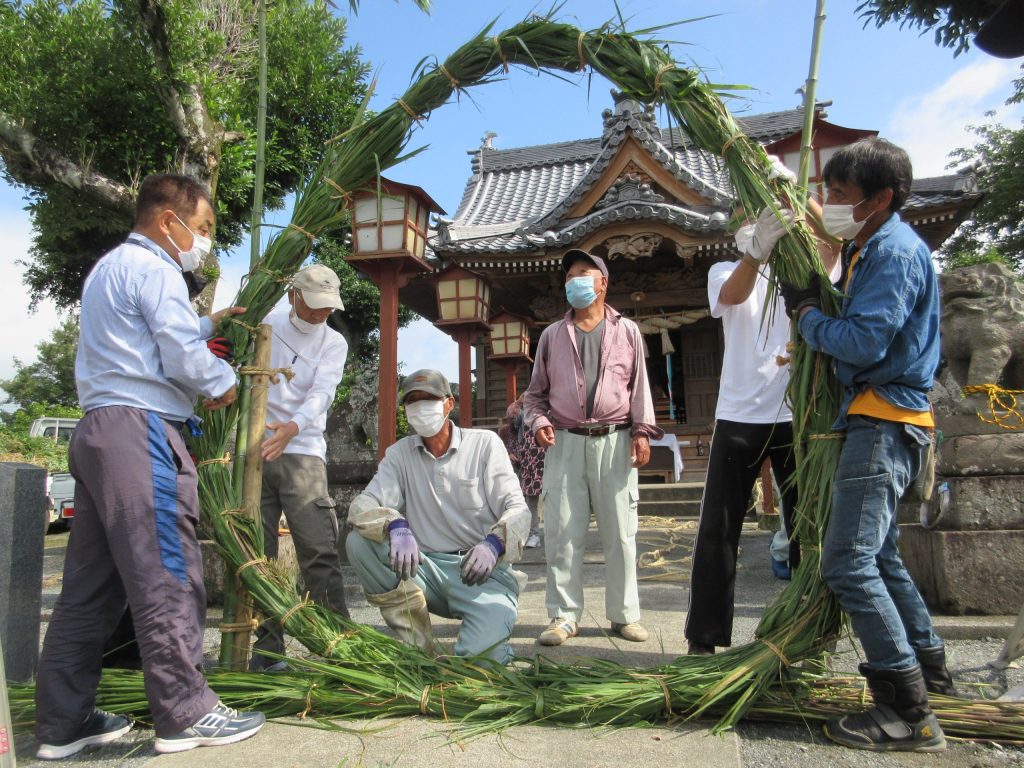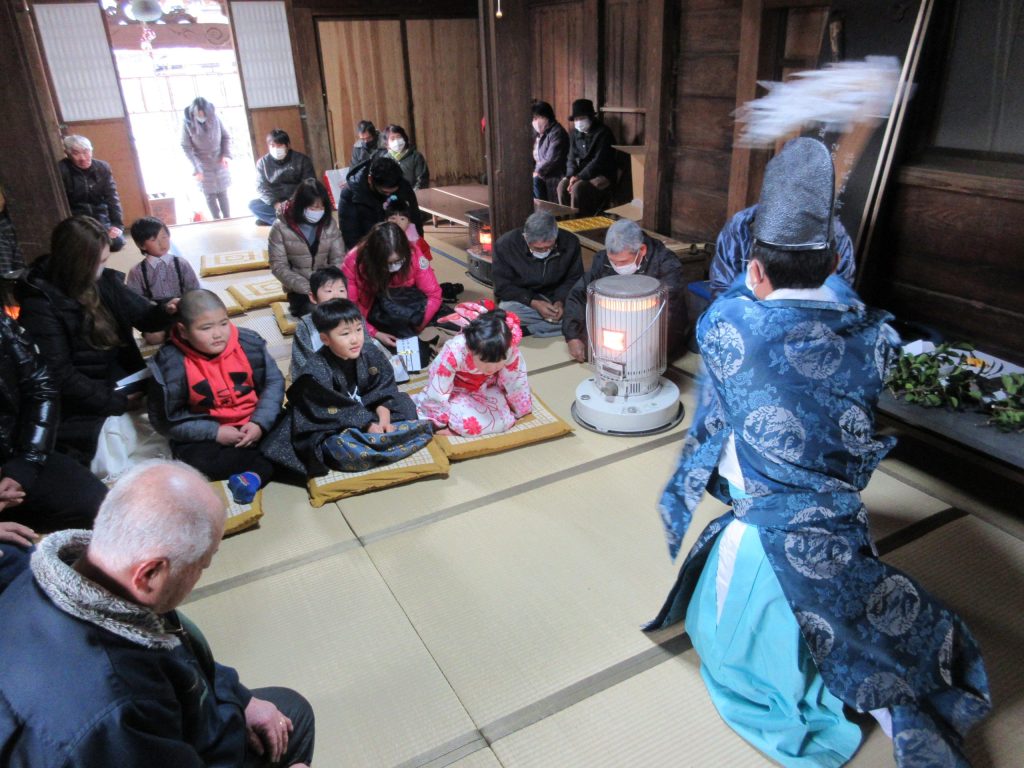
Introduction:
Tanushimaru boasts a remarkable number of Shinto rituals and traditional events that are kept alive by the local community. Unlike in urban areas where people merely attend rituals, in Tanushimaru, the community actively prepares the place for the rituals, allowing the priest to perform them.
Community Involvement:
On the day of the ritual, nobori banners are raised. In some shrines, these banner poles are still erected manually by the ujiko (parishioners). The shimenawa (sacred straw ropes) are handmade, and the rice straw used to make them is cultivated by the community members themselves. In summer, large Chi no Wa (sacred circle of Kaya) are crafted from Kaya reeds gathered from the river, showcasing the inheritance of traditional skills. The workshop is filled with laughter and chatter, exuding the warmth of the community.
Preparations for the Ritual:
The parishioners also prepare the offerings for the deities. They arrange auspicious food items such as sea bream and certain vegetables on the kamidana (shrine shelf) and cut branches from the Sakaki (sacred tree) in the shrine grounds to be used as tamagushi (sacred wands). Sometimes, they even prepare the shide (sacred paper ornaments) to decorate the Tamagushi. During the ritual, the parishioners join the priest in offering the tamagushi to the deities.



Festivities and Community Bonding:
After the ritual, there is a naorai (communal feast) where everyone eats and drinks together in front of the deities. There is also a towatashi (handover ceremony) where omiki (sacred sake) is shared and the duty roster is passed on, further strengthening community ties.
Connection to Agriculture:
Many of the rituals are related to agriculture, such as praying for a bountiful harvest in spring, warding off disease and bad weather in summer, and expressing gratitude for the harvest in autumn. This reflects the continued importance of agriculture in Tanushimaru and is one of the reasons why so many rituals have been preserved.



Traditional SDGs:
These rituals and traditions are deeply rooted in the local nature, industry, and communities. They are a true embodiment of traditional Japanese SDGs. However, in recent years, Tanushimaru has also faced a shortage of people who can carry on these traditions. The number of people who can make shimenawa has declined, and many communities have resorted to using mass-produced plastic alternatives.
Preservation and Sustainability:
In 2023, Tanushimaru's festivals were registered as the second item of the "Chikugo River Heritage" by Kurume City. To ensure the sustainability of Tanushimaru's traditional culture and its transmission from person to person and generation to generation, the community and local government will work together to promote activities based on the Chikugo River Heritage.



